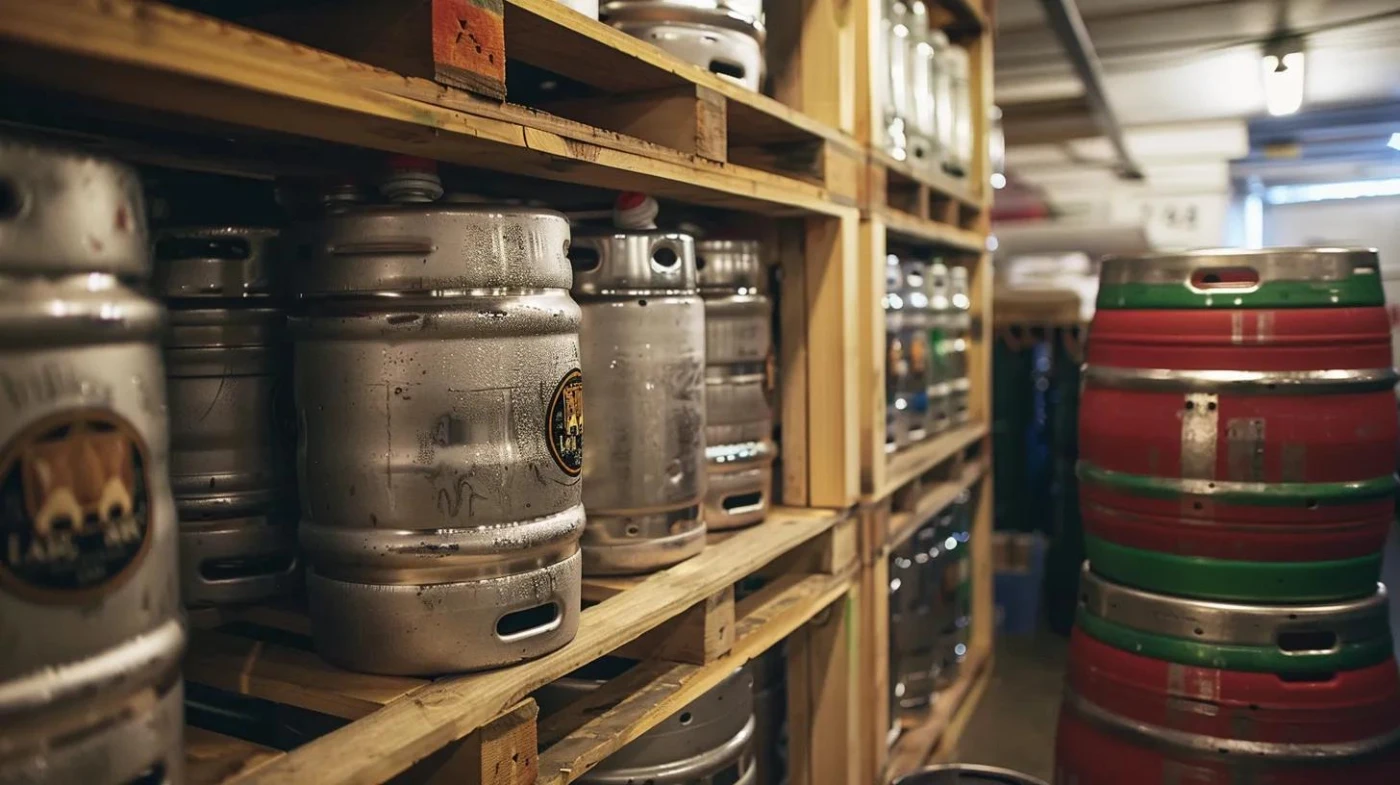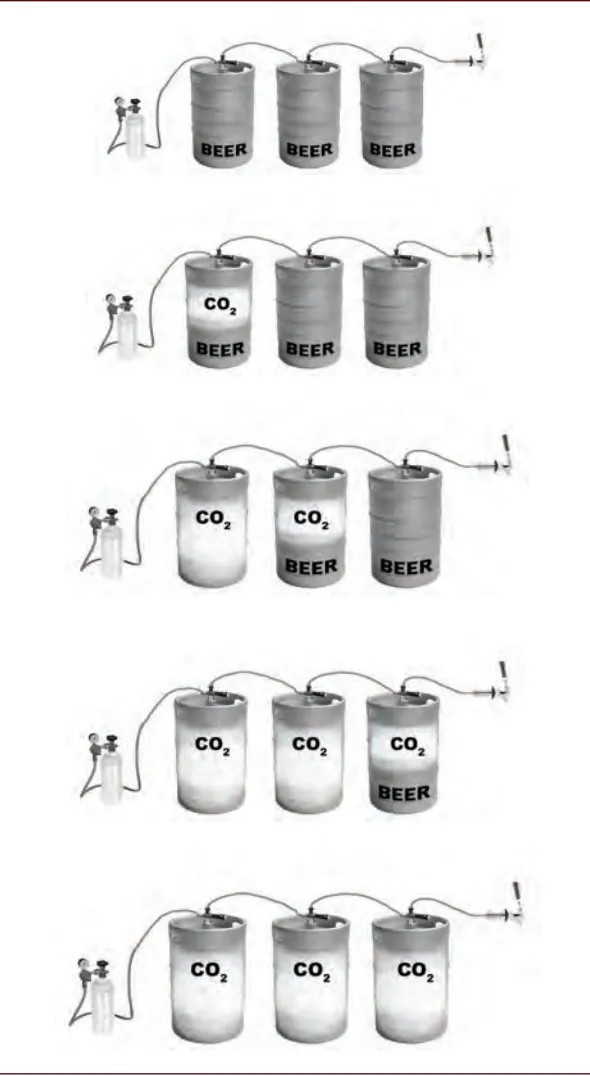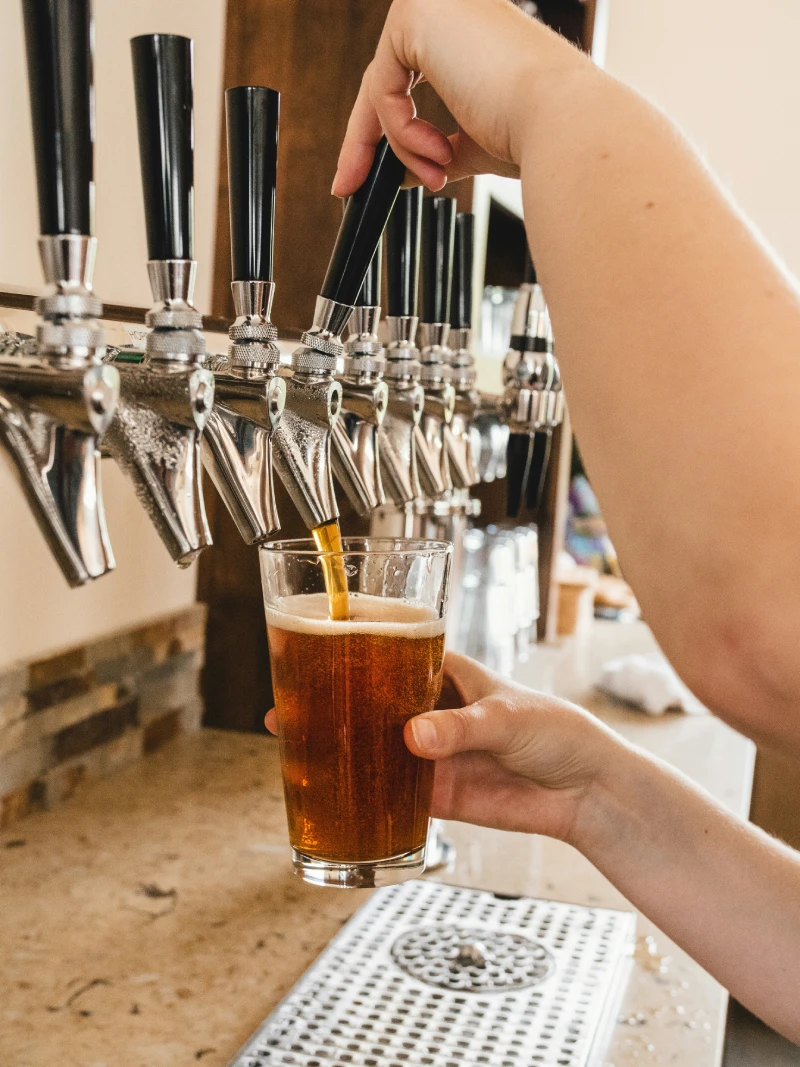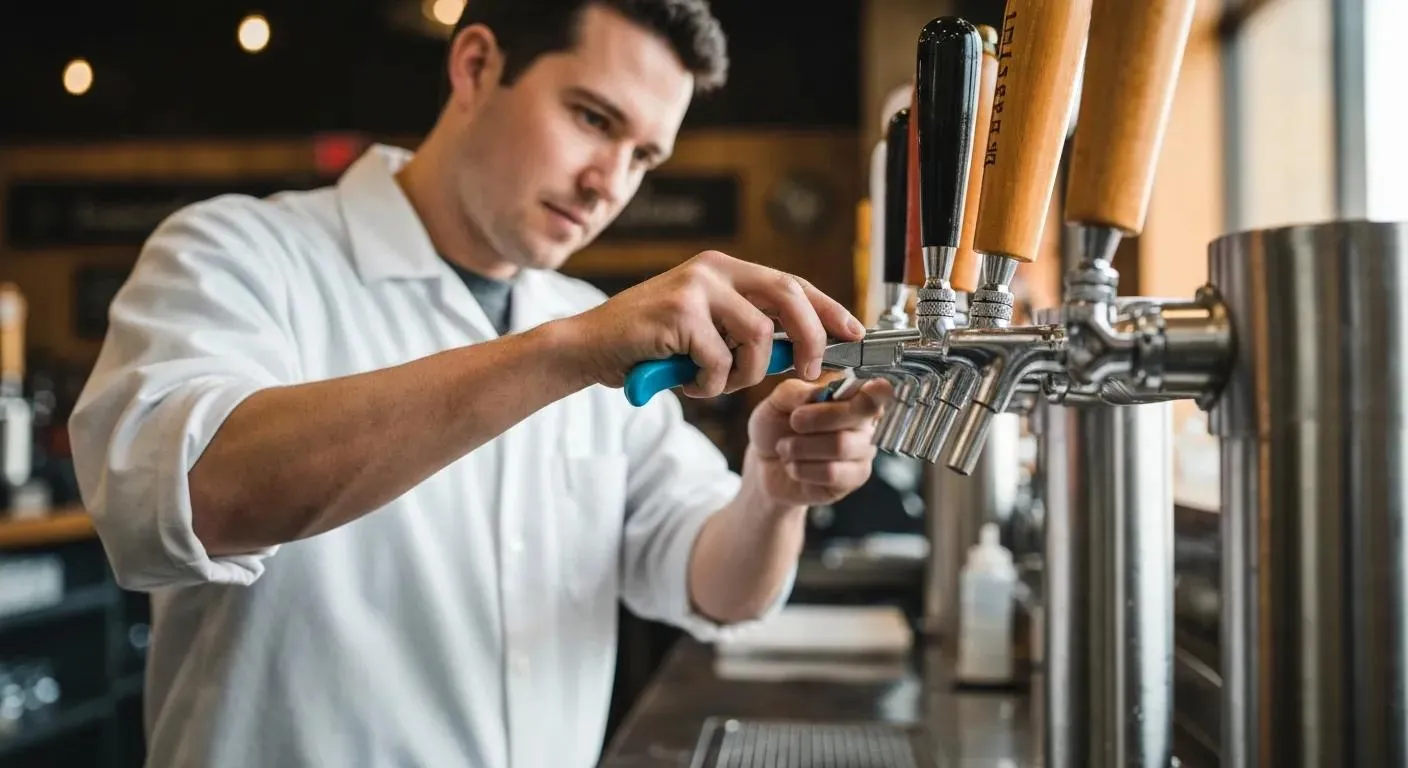How to Create a Fun Daisy Chain with Your Kegs Today

Daisy-chaining kegs is a configuration that connects multiple in series to supply continuous dispensing through shared pressurization, thereby reducing downtime. Operators frequently face service interruptions when a single keg empties, but this method ensures seamless transitions and consistent pour quality. In this guide, you’ll discover the principles behind a daisy chain keg system, the essential components and equipment, a step-by-step assembly process, performance optimization strategies, key benefits for high-volume dispensing and space-saving setups, standard troubleshooting solutions, safety precautions for CO₂ handling, and curated visual resources for reference.
By following these instructions tailored for late 2025 standards, you’ll achieve efficient draft installation and uninterrupted beer flow at every pour, transforming how you serve beverages.
A Professional Recommendation for Commercial Establishments
As a draft technician professional, I generally recommend against daisy-chaining kegs in a commercial bar or restaurant setting. Our standard practice is to ensure every beer or brand has its own dedicated regulator. This approach provides optimal control over individual beer characteristics and carbonation levels, which is crucial for maintaining brand quality and
A significant concern with daisy-chaining in a bar environment is the potential for substantial beer loss due to excessive foam if the system is not set up correctly or if bar staff are not thoroughly trained. Incorrect pressure settings or improper placement of kegs in the series can result in significant product waste, negatively impacting profitability. For these reasons, a one-regulator-per-brand setup is almost always preferred.
However, if an establishment still wishes to implement a daisy chain system, this provides comprehensive instructions to help ensure a correct and efficient setup, minimizing potential issues.
What Is a Daisy Chain Keg System and How Does It Work?
A daisy chain keg system is a draft configuration that links successive kegs via liquid and gas lines to maintain constant pressure and uninterrupted beer flow, streamlining beverage service at events. This system uses a CO₂ supply and a sequence of jumpers to push beer from one keg into the next.
What Does Daisy Chaining Kegs Mean in Draft Beer Systems?
Daisy chaining kegs involves attaching the liquid-out post of one coupler to the liquid-in post of another, creating a series of kegs that dispense under a single pressure source. This setup transfers beer from an upstream keg to the downstream keg coupler, ensuring that each keg empties in sequence without pressure fluctuations. By linking kegs in this manner, the system prevents the time spent changing kegs, especially in higher volume environments.
How Does Beer Flow Through a Daisy Chain Keg Setup?
In a daisy chain setup, CO₂ from a central tank pressurizes the first keg, pushing beer out through its liquid line, through a jumper hose, into the next keg coupler’s liquid-in connection, and finally to the faucet. As each keg empties, pressure remains consistent across the chain, maintaining pour quality and foam control. This liquid-to-liquid flow path, supported by a single gas regulator, simplifies draft management and ensures uniform carbonation levels.

What Are the Key Components of a Daisy Chain Keg System?
Before assembling a series of kegs, gather the essential parts that form a daisy chain keg system:
These components work together so that the daisy chain keg system enables continuous beer dispensing and reduces the labor involved in replacing individual kegs. Proper component selection sets the stage for safe and efficient service.
How Many Kegs Can You Daisy Chain Together Safely?
Most setups safely daisy chain up two to four kegs without significant pressure loss, provided the regulator is rated for the combined volume and jumper hoses maintain minimal friction. Exceeding four kegs can require a secondary gas source or manifold to preserve pressure. System designers should account for line length, keg size, and regulator capacity to avoid inconsistent pours and foam buildup.
Understanding these capacity limits prepares you to choose the right regulator and jumper lengths, ensuring each additional keg remains fully functional under the same gas supply.
What Equipment Is Needed to Connect Multiple Kegs for Dispensing?
Establishing a multi-keg draft requires selecting equipment that balances pressure, flow rate, and compatibility to support uninterrupted service. The following items are daisy chain keg setup.
Which Types of Keg Couplers Are Compatible with Daisy Chain Systems?
Ball lock couplers for Cornelius kegs and Sanke D couplers for commercial kegs are the most common types used in daisy chain configurations. Each coupler must match the keg valve standard to ensure airtight seals and proper liquid and gas connections. Choosing the correct coupler prevents leaks and maintains carbonation levels throughout the chain.
Different keg couplers are designed for specific keg types, ensuring a secure and proper connection for both gas and liquid lines.
How Does a CO₂ Tank and Regulator Support the System?
A CO₂ tank pressurizes all linked kegs, and the regulator adjusts output pressure—typically between 12 and 14 PSI for lagers and ales—to optimize foam control. The regulator’s gauge displays real-time pressure, enabling precise adjustments that prevent over-carbonation or foaming. This gas supply foundation ensures the daisy chain keg system promotes consistent pours.
Proper regulation of CO₂ pressure is crucial for maintaining consistent beer quality and preventing dispensing issues.
What Is a Liquid Line Jumper and How Is It Used?
A liquid line jumper is a short food-grade hose assembly that connects the liquid-out post of one keg coupler to the air-in post of the next. It transfers beer from an upstream keg to the downstream coupler without introducing gas. Properly sized jumpers minimize internal volume and friction, allowing for smooth beer flow throughout the chain. Typically, 3/8 I.D. vinyl line for standard D-sanke couplers and 1/2 barrels.
When and Why Should You Remove Check Valves in the Setup?
Check valves on gas posts should be removed when linking kegs in series to allow uniform distribution across all couplers. Removing one-way valves eliminates pressure imbalances that can starve downstream kegs.
The concept of using multiple kegs for dispensing is well-established, with systems designed to manage the fluid and carbonation needs of each.
With these pieces in place, the daisy chain keg system reduces complexity by relying on a single regulated gas source, making multi-keg dispensing feasible and efficient. For more information, you can learn about .
How Do You Set Up a Daisy Chain Keg System Step-by-Step?

What Are the Initial Preparations Before Connecting Kegs?
Begin by sanitizing all couplers, jumper hoses, and draft lines to prevent contamination. Inspect gaskets, O-rings, and clamps for wear and replace any faulty parts. Position kegs in sequence with sufficient clearance for jumper hoses and faucet access.
Ensuring hygiene and equipment integrity at this stage prevents microbial growth and foam issues later in the dispensing process.
How to Connect Keg Couplers and Link Liquid Lines Correctly?
- Before connecting the kegs in a series, remove the CO2 check valves from the couplers.
- Tap the first keg using the standard coupler, your D-sankey coupler.
- Instead of connecting the beer line from this first coupler to the bar faucet, connect it to the CO2 inlet on the second keg’s coupler. As the picture shows above.
- Attach subsequent kegs the same way.
- When pressurized and pouring, beer flows from the first keg to the second, then to the third, before reaching the faucet.
- Once set up, this system will dispense all the kegs in the chain before it runs out of beer.
- This ordered linking guarantees sequential emptying and uninterrupted pours, as each keg is tapped in turn without pressure loss.
How to Attach and Regulate CO₂ for Consistent Pressure?
- Securely mount the CO₂ tank and attach the regulator, ensuring all fittings are snug.
- Open the tank valve slowly and adjust the regulator until the gauge reads the desired PSI. Usually 12-14 PSI
- Confirm the gas reach by checking the pressure on
These actions align CO₂ supply with the combined keg volume, enabling the daisy chain keg system to maintain stable carbonation and pour consistency.
What Are the Best Practices for Testing and Starting the System?
Purge a small amount of beer from the faucet to confirm clear liquid flow and balanced pressure. Check all connections for whispers of gas leaks and tighten clamps if needed. Monitor the first few pours to ensure correct foam levels—adjust the regulator by 1 PSI if foam persists.
Testing before service prevents customer disruptions and sets a benchmark for serving parameters throughout the event.
What Are the Benefits of Daisy Chaining Kegs for Events and Homebrewing?
By aligning kegs in series under one regulated pressure source, daisy chaining enhances efficiency, reduces waste, and simplifies logistics—advantages that scale from backyard gatherings to large festivals.
Why Is Daisy Chaining More Efficient for High-Volume Beer Dispensing?
Linking multiple kegs to a single gas supply eliminates the need for repeated regulator adjustments and individual keg swaps, saving labor and speeding up service. This efficiency makes a daisy chain keg system ideal for mobile bars, weddings, and brewpubs needing uninterrupted flow.
Can Mini Kegs Be Daisy Chained for Portable or Home Use?
Yes, mini Cornelius kegs fitted with ball lock couplers can form a mini daisy chain for tailgates or home bars. Lightweight regulators and small CO₂ cartridges maintain pressure, delivering the same continuous flow benefits in a more compact format.
These benefits demonstrate how daisy-chaining kegs empowers operators and enthusiasts to serve great beer with less waste, lower labor, and streamlined setups.
How Can You Troubleshoot Common Issues in Daisy Chain Keg Systems?
Even a well-configured series can face foam, leak, or pressure challenges. Identifying symptoms quickly restores service and maintains quality.
What Causes Excessive Foam and How Can You Fix It?
Foam often results from over-pressurization, line temperature fluctuations, or gas pockets in the liquid lines. Reducing regulator pressure by 1–2 PSI, chilling lines closer to serving temperature, and purging small beer samples from each coupler will curb foam and stabilize pours.
Also, the keg series should be replaced every 7 days if not completely empty. Full kegs in the series should be placed first, closest to the gas or regulator, with the semi-full kegs downstream. See the picture above. If done incorrectly, the account can experience a lot of foam from their dispensing system and wasted product.
How to Identify and Repair Leaks in the Keg Chain?
Gas or liquid drips at couplers, clamps, or hoses indicate seal failure. Pressurize the system and apply a food-grade leak detection solution around fittings; tighten or replace any faulty O-rings or clamps. Fixing leaks promptly prevents pressure loss and potential safety hazards.
What Are Signs of Inconsistent Pressure and How to Correct Them?
Uneven pour speed—such as one keg serving slowly while another gushes—signals regulator issues or clogged lines. Verify regulator gauges, clean or replace draft lines, and ensure jumper hoses have no kinks. This maintenance preserves the daisy chain keg system’s balanced pressure.
How Does Proper Keg Rotation Improve Beer Quality in the Chain?
Rotating kegs by service order prevents sediment build-up and ensures consistent flavor throughout a multi-keg run. Position the fullest keg at the start of the chain and move emptier kegs downstream towards the faucet as they near depletion, maintaining clarity and taste uniformity.
Addressing these troubleshooting steps keeps your system reliable and beer quality high during extended events.
What Are the Safety Precautions When Handling Daisy Chain Keg Systems?
Handling pressurized gas and heavy containers demands strict safety protocols to protect staff and guests from accidents.
How Should You Safely Handle CO₂ Tanks and Regulators?
Always secure CO₂ tanks upright in a stable cage or bracket. Open tank valves slowly, stand to the side to avoid sudden pressure releases, and inspect regulators for proper seals before each use. These practices ensure the system remains safe throughout service.
What Are the Risks of Improper Pressure Settings?
Excessive pressure can over-carbonate beer, causing gushing pours and foam hazards, while under-pressurization results in flat beer and service delays. Regulator misadjustments can also stress fittings, leading to leaks that pose asphyxiation risks in confined spaces.
How to Maintain Cleanliness and Prevent Contamination in the System?
Regularly flush all lines, couplers, and jumpers with a brewery-grade cleaning solution after each keg run. Perform weekly deep clean cycles on couplers and internal beer lines to prevent microbial growth. Adhering to cleaning schedules ensures sanitary dispensing and preserves beer quality.
By following these precautions, the daisy chain keg system remains both efficient and safe for operators and consumers.
Conclusion
Daisy chaining kegs offers a streamlined solution for continuous beer dispensing, enhancing efficiency and reducing downtime during high-volume events. By understanding the essential components and best practices, operators can ensure consistent pour quality while minimizing labor. For those looking to optimize their beverage service, exploring our expert resources can provide valuable insights. For more questions about daisy-chaining draft systems or other questions, reach out to Renny's Draft Solutions



